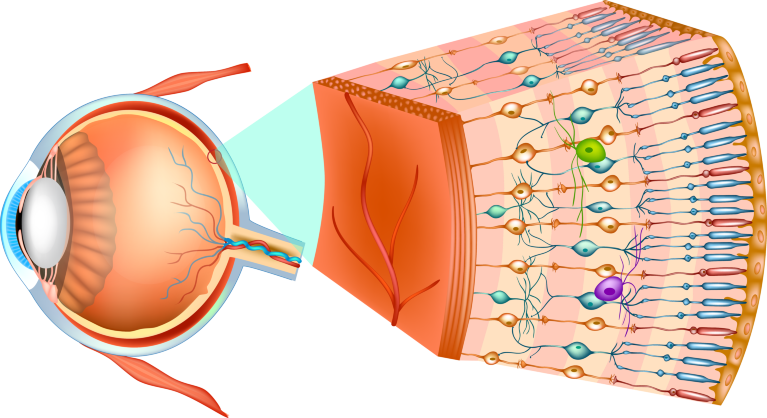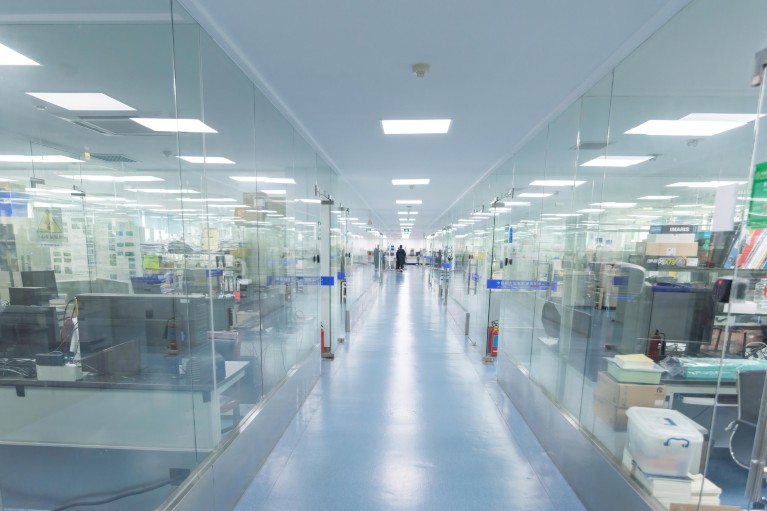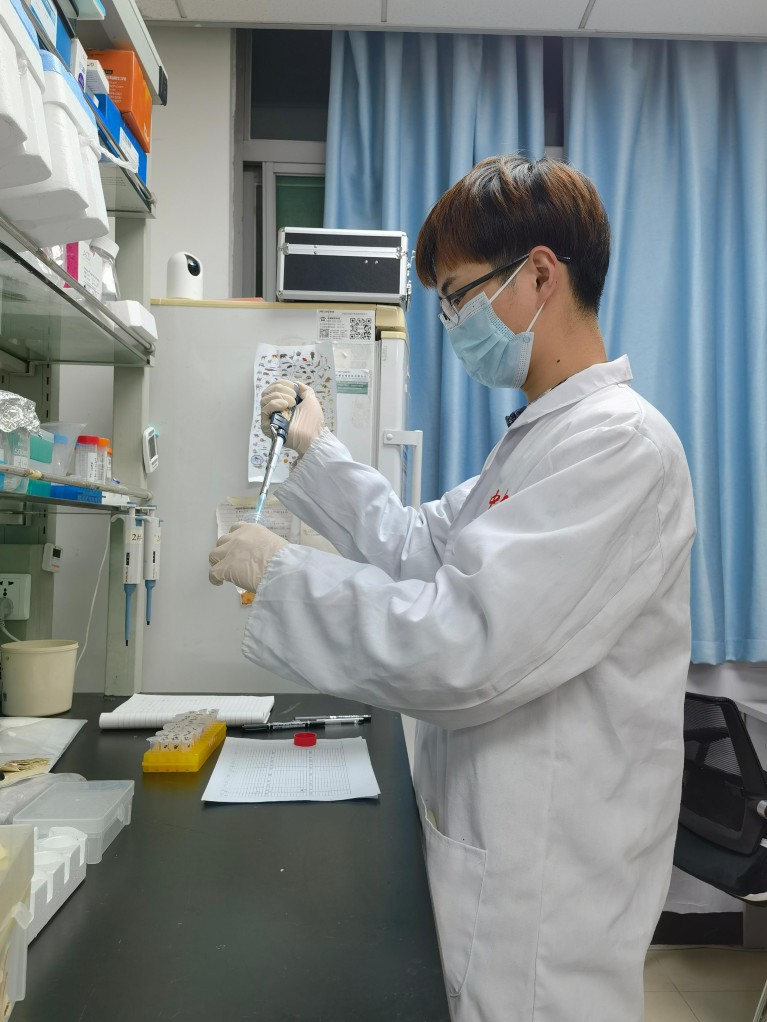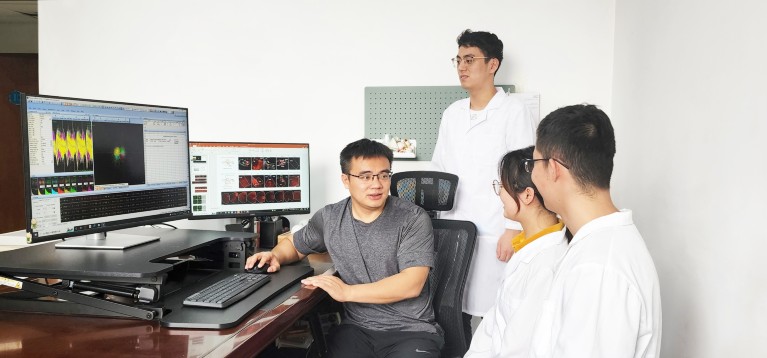
USTC provides strong academic and administrative support for its faculty and trainees to pursue their scientific goals.Credit: Sakurra/Shutterstock
“The very act of sensing is one of the pillars of life,” says Tian Xue, professor at the University of Science and Technology of China (USTC).
Evolving from the School of Life Sciences and its first affiliated hospital in 2017, the Division of Life Sciences and Medicine at USTC has made great strides to integrate the two disciplines. In line with this strategy, USTC’s First Affiliated Hospital is running as a pilot clinical research centre, combining clinical demands and basic research to enable technological and medical advancement.
Scientists at UTSC’s Division of Life Sciences and Medicine, such as Xue, are using a collaborative approach to clinical work, teaching, and research that integrates life science and medicine to explore how sensory stimuli such as light and sound affect body function and health.

The Experimental Centre at USTC‘s Division of Life Sciences and Medicine.Credit: Yangfan Liu
Shining light on early brain development
Xue’s team is particularly interested in light. “We receive more than 80 to 90% of our information input by sensing light. It is thus critical to comprehend how light modulates physiological functions like circadian rhythms, and if there are any ways to restore impaired sensory mechanisms,” explains Xue, whose research explores the neural mechanism of light-promoted early brain development.

A graduate student carries out genotype identification of mice in one of UTSC’s high-tech labs.Credit: Yangfan Liu
Extensive neuronal networks interconnect the brain’s sensory cortices and connect them to higher brain cognitive areas like the prefrontal lobe and hippocampus. This formation of neuronal connections is partly genetic but is also determined by other rich sensory stimuli like the light that we receive during infancy. But which cells are responsible for early light sensation? After light is perceived, how does it coordinate neuronal circuitry and signalling pathways underlying cross-modal brain development? What will happen in adulthood if external stimuli is insufficient or absent?
These questions are seemingly neurological ones, but the answers require knowledge and practices integrating genetic engineering, molecular biology, and analytical chemistry.
“Transgenic mice were generated as a model for this study. We found a group of photoreceptors, intrinsically photosensitive retinal ganglion cells (ipRGCs), through which light sensation promotes the brain’s early development,” explains Xue whose team was able to confirm that a lack of light sensation during early development impairs adult mice’s learning ability.
Xue’s group is now working closely with paediatricians and public health experts to look at the effect on mammalian health and survival. “We hope our findings will draw attention to the importance of suitable light in infant care while also providing a scientific basis for optimizing newborns’ developmental environment.”
Music for pain relief
The university aims to cultivate new generations of clinicians with science and engineering backgrounds, emphasizing developing interdisciplinary medicine, which promotes the development of medical devices, material, and innovative treatments.

Zhi Zhang and his team trace neural circuits in the brain to uncover the mechanism of sound-induced analgesia and its role in relieving pain.Credit: Yangfan Liu
Another group at USTC adopting an interdisciplinary approach is Zhi Zhang’s research team, which has resolved a neural circuit for comorbid depressive symptoms in chronic pain. Neural circuits are formed from multiple interconnected neurons, which coordinate for a specific function when activated. “Neural circuitry activities are directly responsible for controlling our behaviour,” says Zhi Zhang, a professor in the Division of Life Sciences and Medicine.
“Negative feelings frequently coexist with pain,” explains Zhang. “For both, therapeutic cures are still very challenging. If we understand specific neural circuits and molecular mechanisms, we can then target them for better management of debilitating, persistent conditions.”
Zhang’s team is tracing neural circuits in mouse brains to uncover how sound-induced analgesia, the use of music to relieve pain, works.
“It’s problematic because animals do not perceive music in the same way we do,” says Zhang, who conducted behavioural tests using consonant and dissonant sound and white noise and found that different sound types did not affect mice differently.
Instead, they discovered that the key lies in sound intensity: when a 5 decibel sound to background noise ratio is played, the mice become tolerant to a certain level of pain but not sound at other intensity.
“New technologies have evolved as neural circuit research progresses. “We were able to use tools like optogenetics and chemogenetic inhibition to identify and validate the functionally important connectivities,” says Zhang.
His team’s research paves the way for examining the neurological basis of these intriguing correlations in neural circuits and modifying them to optimize pain alleviation. “We can now proceed with non-invasive, non-pharmaceutical, precise intervention which precisely stimulates nerves confined to a tiny brain region.”
Zhang’s team is currently collaborating with anaesthesiologists and pain management specialists to see if the findings in rodents can be echoed by clinical evidence. “We also look forward to cooperating with artificial intelligence specialists, acousticians and even musicians to extend our findings to the general population through new inventions.”
This advertisement appears in Nature Index 2022 Innovation, an editorially independent supplement. Advertisers have no influence over the content of the editorial articles within this supplement.


